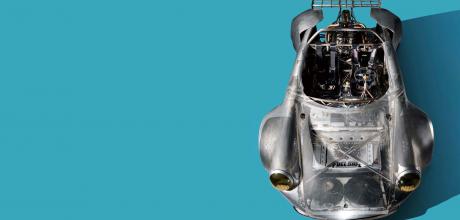Oil Stain Labs - Half11
The Half11 project, from the minds of Oilstainlab, is a design-driven prototype vehicle that challenges all to define it. Oilstainlab is disrupting the world of coachbuilding, creating a new style of vehicle that blurs the lines between a hot rod, a Le Mans race car and a modern supercar.
Oil Stain Labs — Half11
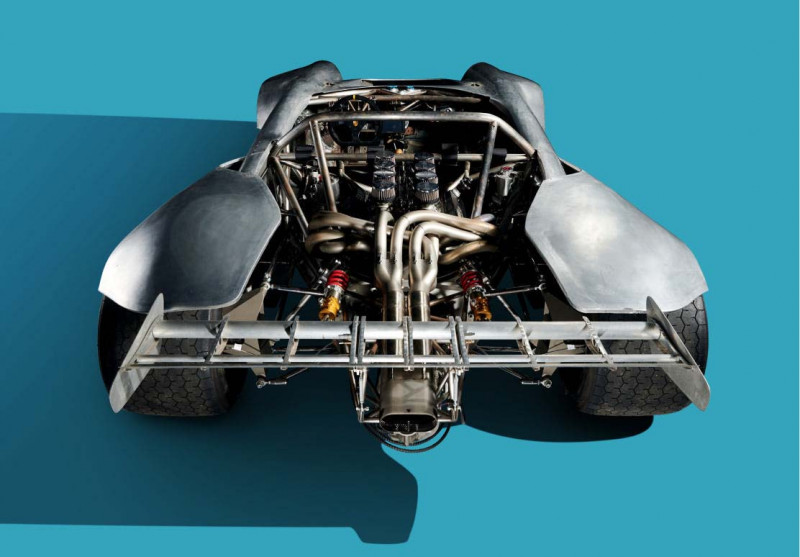
‘WE WERE HAVING DRINKS AT OUR LITTLE BEER GARDEN, DISCUSSING WHAT TO DO WITH THE CHASSIS, AND STARTED TALKING ABOUT MOTORS PORT HISTORY AND ICONIC CARS. WE WERE ALWAY S FASCINATED WITH THE 1970 PORSCHE 917, AND WANTED TO PAY TRIBUTE TO THAT ERA.’
To understand the purpose and development of the Half11, it makes sense to look at its creators. Twin brothers Iliya and Nikita have spent their careers designing at various OEMs – working on production vehicles whilst setting automotive trends with their personal vehicles. Originally born in Nova Scotia, Canada, they moved to the US at 17 years old. Their combined experiences have allowed them to venture beyond their commercial lives to start their own company. Both brothers have worked in design departments for large vehicle manufacturers – initially at Toyota, then both heading over to Honda. After a successful career with Honda, Iliya moved on to GAC Motors and then to Canoo – an LA start-up that has developed breakthrough electric vehicles. Nikita moved to Hyundai to work on the Genesis models, and then went to General Motors Advanced Design where he explored the future of transportation trends and the mobility space. Oilstainlab was started as a conceptual idea back in 2015 — a blank canvas to explore their design skills in a non-corporate environment. With everything falling into place, Oilstainlab became a reality and is now an official company creating its first visual business card, the Half11.
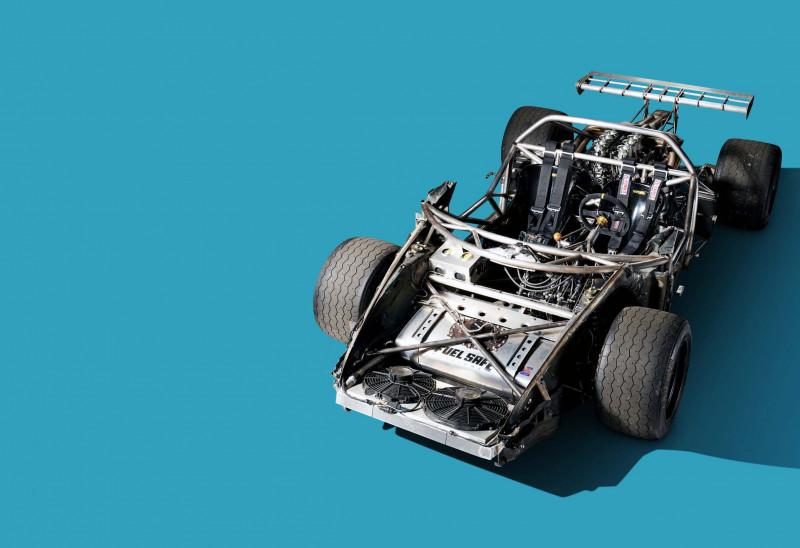
The company name pays heed to the idea that cars have character and soul, and their imperfections define them. Oil stains are inextricably linked to both gear heads and car culture – the passionate motor enthusiast sporting oil stains on their clothes like a badge of honour.
The Half11 had a slow start. ‘A Porsche 911 chassis came up that was incredibly cheap and we just had to take it right there on the spot. We didn’t have any idea what to do with it. It kind of just sat in the backyard for a time whilst we contemplated what we were going to do.’ At the time, the brothers already had collected a few other 911s, all with different looks and specifications. All the cars have different widths, starting with the narrowest: an RS-fendered 911, then a turbo wide body, and the widest being a ‘74 RSR. ‘We were having drinks at our little beer garden, discussing what to do with the chassis, and started talking about motorsport history and iconic cars. We were always fascinated with the 1970 Porsche 917, and wanted to pay tribute to that era.’

Amongst the brothers’ passion for vintage motorsport is the Can-Am racing series that took place from 1966 to 1987. The Canadian-American series was dominated by Lolas, McLarens, and Porsche 917’s. Subsequentl, the Halfll was developed to answer the question, ‘what if Porsche had used the 911 platform to create their prototype race car during that era?’ Iliya went into work the next day and created the Half11 sketch.
The design is based on a 911 chassis up until the B pillar. The body was always going to be made of aluminium, as they wanted the car to be authentic, bespoke and timeless. The brothers made all the body work from scratch, using the 500-dollar 911 chassis they purchased as a buck to form the aluminium around. The project has allowed them to learn new skills that they always admired. They took metal shaping classes to understand how to shrink and stretch the panels and to get a full understanding of what it would take to create a Half11. Jake Krojte, their metal working mentor, is now responsible for creating the body and works closely with the boys to achieve the final result. Joe Scarbo is the mechanical genius behind Half11 – engineering and fabricating everything behind the B pillar. By using the chassis of the original 911, the Half11 can be street registered as a vintage vehicle in the US.
For their prototype test mule, the use of a V8 LS engine allowed them to evaluate the water cooling system, as well as produce an insane amount of power and torque. ‘Whilst not intended to be the final power plant it will allow us to fully stress test the chassis design. We want something we could drive anywhere, and the LS just suited the purpose.’
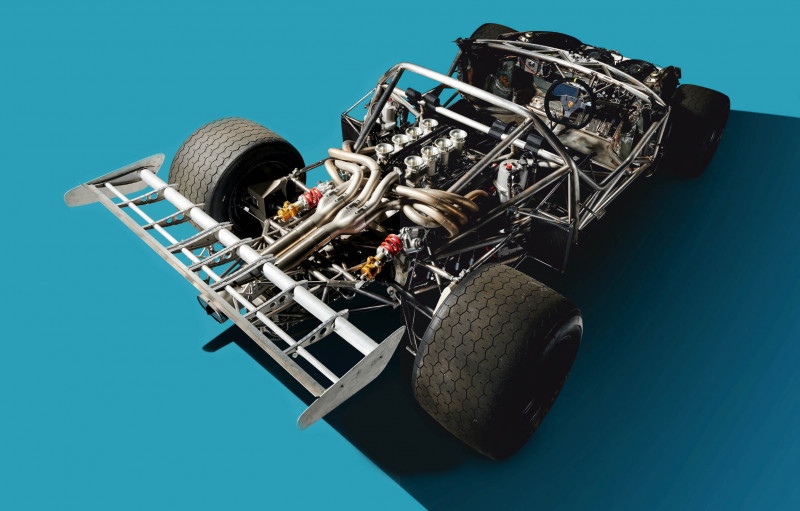
Its based on the LS3, and significantly modified to create the horsepower and torque required. ‘We expect the car to weigh about 1600 pounds and have around 650 horsepower. I think that’s more than enough of a power-to-weight ratio for anybody to be terrified. We are going as extreme as we can and looking to chase the Can-Am power to weight ratios of the day.’ The gearbox and differential combination is provided by a Porsche 996 GT2 transaxle, inverted and now in its new mid-engine location. In the future, client builds of the Half11 will most likely house a Porsche flat-6 air cooled or water cooled turbo engine, although any serious engine can be considered – even a Judd V8!
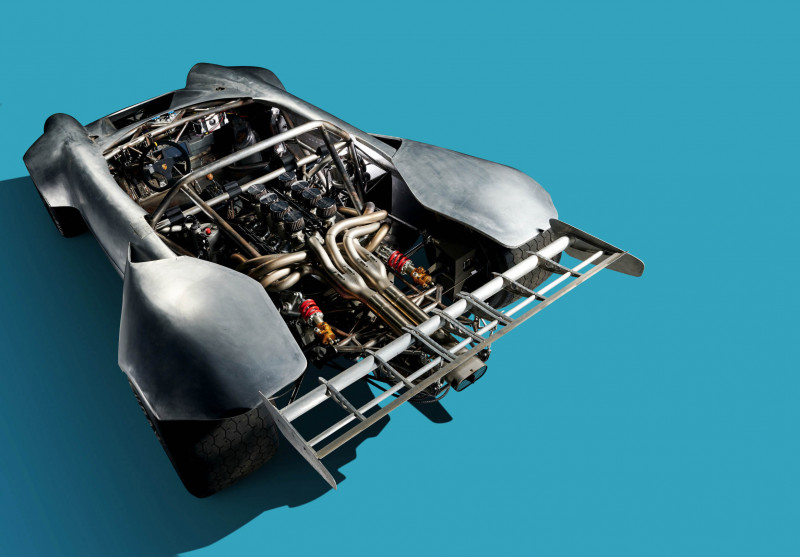
Electric power could be a future option as well, and has been packaged for the design, but at this stage hasn’t been engineered.
But of course, the electric version wouldn’t have ‘that’ exhaust system. A work of art, 18 months in development and the ‘piece de resistance.’ Highly visible and something very much period looking. ‘Back in the day the exhausts were sand-bent, not mandrel-bent like modern systems, they had a much more organic feel to them and we wanted that in our system.’ It did however pose a lot of technical problems and manufacturing issues. Since they had been designing everything using Computer Aided Design (CAD) software the tolerances were extremely tight and very different to the way things were done in the past.
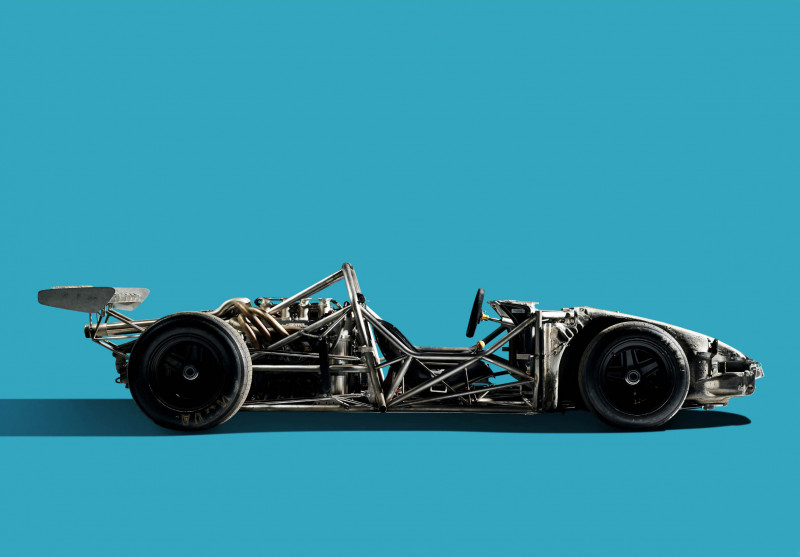
The exhaust is a crossover system, 4 pipes into 2 into 1 on each bank but crossing over with a spiral firing order. Inspired by the GT40 ‘Bundle of Snakes’ design, its now 3D printed from Inconel, an alloy predominately made of Nickel and Chromium. Inconel is very resistant to heat, incredibly light and the technology and material used by the Formula 1 teams. The devil is in the detail and the printed Inconel process allowed the manifold to be printed in a D shape to exactly match the exhaust port from the LS engine. The D shape transitions to fully circular at the collector providing a super-efficient exhaust gas f low, simply not possible with previous manufacturing methods.
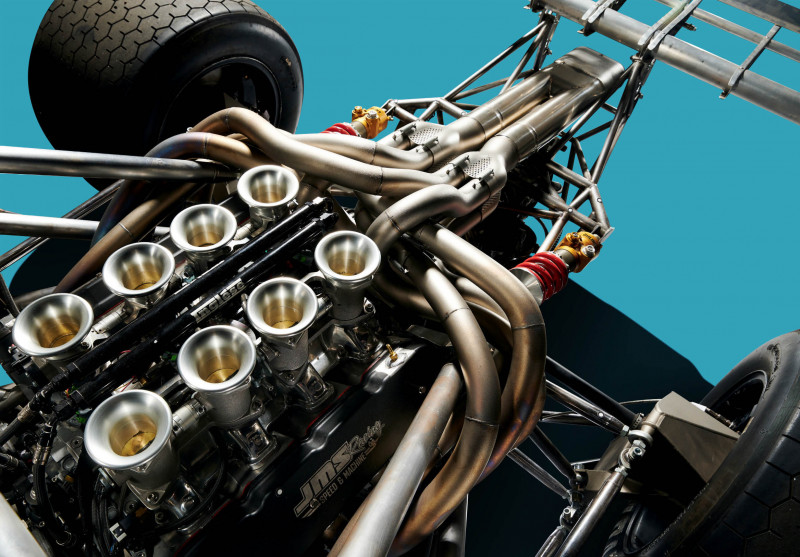
The brothers are excited by how the prototype is nearing completion — it’s almost to the stage of first fire-up and dynamic testing. ‘The oil and cooling systems are done, and we are currently onto the wiring process. Every piece is bespoke, and delays in manufacturing have been common. Currently, the custom starter motor and shocks are delaying the first run.’
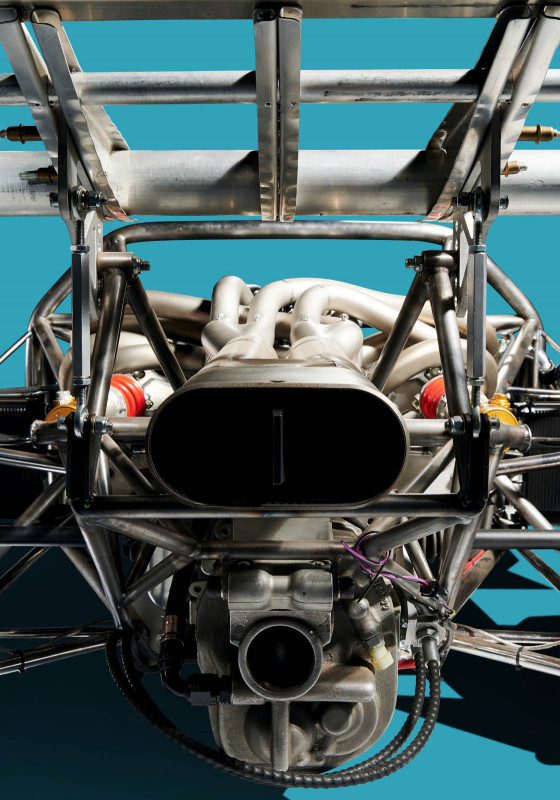
‘Whilst the Half11 project was started to show what Oilstainlab does, and is capable of, along the way we have had a lot of interest from people wanting to buy one. We were amazed by the amount of interest, but have had to turn customers away because we are still developing the product and can’t guarantee everything. As professional automotive designers, we take a lot of pride in our work. We don’t want to take any deposits until we know what we can deliver and know that it’s up to our standard.’ The current plan is to create a run of 25 Half11’s to match the period correct homologation Rules of Le Mans in the 60’s and 70’s – how’s that for nostalgic detail? ‘The prototype for us is proof we can do what we planned. When customer builds start, each car would be unique in terms of its story telling element.
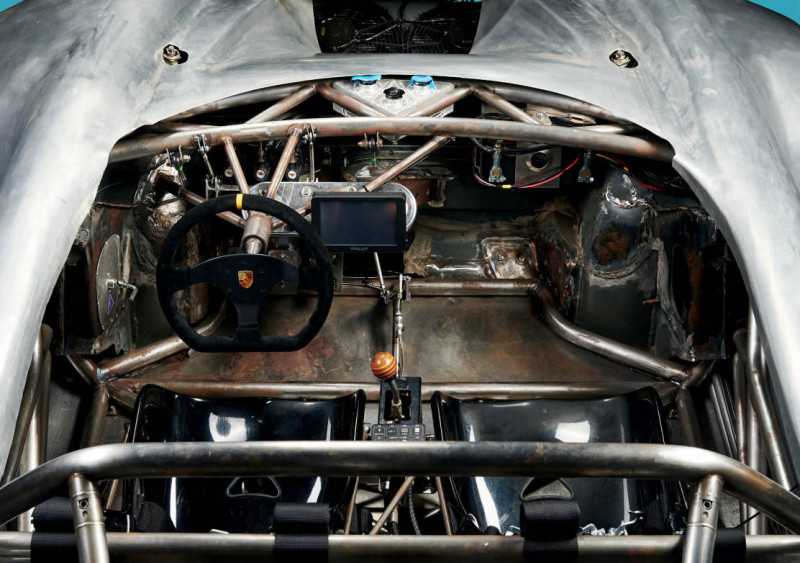
For example, we envisage one that would be later in its Can-Am career, maybe with aero upgrades, and a possibly a Mille Miglia or Targa Florio open-top version. If it was me, I would really love it if someone spec’d a battle scarred one with one headlight, and marked with dents appropriate to its racing history,’ says Iliya.
As designers for large comapnies, they have been involved with multiple show cars – which to regular folk it may appear that they are created by magic – but behind the scenes there’s a huge team of people. Conversely, at Oilstainlab, with just the two of them, the amount of work can be overwhelming. During the project, they ran into issues in certain areas, like wheels and brake packages that they design, only to then find out no one actually makes these parts at the size they want. ‘Days of chasing down parts and calling people, it’s this backend work that’s such as drain on time. The creative stuff is, well, the easy bit and we can do it all day. The hard part is the tangible logistical stuff and this can be incredibly difficult. When you go into bespoke development of parts, there is countless hours of research and design and you end up spending two weeks on pieces no one will ever see, but we know it’s there’.
It’s this dedication to their craft that sets Oilstainlab apart as well as their intent to make each vehicle match the individual. Whatever the ultimate buyers see in each of these handmade gems may very well be different, however what they all will have in common will be the character and soul of its creators.


